It has been a good 12 months for the dealer sector in the UK. All the fuel suppliers are fighting for dealer business with even the major brands seemingly happy to brand the small- to medium-size dealer sites they have largely ignored in the past. Oil companies have also been prepared to buy dealer sites with Harvest Energy acquiring HKS, Phillips 66 coming back into company owned with Nick Baker’s five sites, and Certas Energy acquiring dealer sites for its Gulf Fuel Express network.
Dealers are also increasingly developing their own sites with 17 new-builds in the past 12 months more than in any previous year. Margins and volumes have held up, and with the Competition & Markets Authority (CMA) ruling against the merger of Sainsbury’s and Asda, all the supermarkets have backed off with their pump-pricing stance. Indeed, the RAC recently reported that independent retailers were "being fairer with their customers by more closely mirroring movements in the wholesale price".
The last 12 months have seen a lot of movement in the numbers and the headline figures are on the right under the heading UK Fuel Market 2019 vs 2018. Generally, continuing the story from the last three year’s Fuel Market Reviews, there is a lot of confidence in the forecourt sector and all the signs continue to be positive.
However, trends in the numbers and types of new cars being sold are going to affect the forecourt sector. There is the continued move away from diesel cars, down to below 30% of new cars purchased, and the issue of alternatively fuelled vehicles (AFVs). Despite the publicity surrounding AFVs, only 6% of new vehicles are AFVs and for pure electric vehicles this number is still less than 1% of all new vehicles (18,000 over the last 12 months). By far the majority of AFVs are hybrids, which still require petrol or diesel and so over 99.5% of vehicles on the road are still powered by an internal combustion engine that requires a visit to a forecourt to buy petrol or diesel.
The number of publicly available electric vehicle charging stations has, in the past month, overtaken the number of forecourts in the UK. There are 8,471 public charging stations, according to Zap-Map, but only a few hundred are on forecourts.
Following four years of fuel volume increases the Department for Business, Energy and Industrial Strategy and HM Revenue & Customs indicate that road fuel volume in calendar year 2018 was flat at 47bn litres. In the last quarter of 2018 there was an increase in petrol usage and a decrease in diesel usage, but at the moment these changes are still restricted to around +/- 1%. The government has stopped reporting road fuel volumes by sector and the 47bn litres includes HGV diesel, which we estimate at about 11bn litres, leaving a motor fuel volume through the retail network at 36bn litres for 2018.
Over the last year Experian Catalist has visited and re-surveyed 4,800 sites across the UK and this report is our view of the retail forecourt market. This time last year we reported 8,422 open sites so we have seen a net reduction of 22 sites over the year. However, analysing this small net loss reveals significant changes (new builds + sites re-opening closures).
In terms of new-build investment over the past 12 months, we recorded 33 new-build sites, almost the same as in the previous year 12 by the major multiple retailers (four Asda, five Tesco all unmanned and three Sainsbury’s). There were 17 new-build dealer sites (up from four in 2017) and four new-build oil company sites (down from seven in 2017). In addition, 20 sites re-opened after a period of closure (down from 27 in 2017) seven company owned and 13 dealers. We also recorded 76 sites closing over the past 12 months (up from 61 in 2017) all dealers.
There has also been a significant number of ownership changes over the past 12 months, with 84 sites changing category of ownership. The Co-op Group continued on its journey of switching from oil company fuel brands to its own Co-op fuel brand 23 sites have changed over the last 12 months and it now has 93 own-brand sites out of a total of 145. These sites have been re-classified from dealer to hypermarket in our figures. Eight company owned sites moved into the dealer sector and 50 sites went the other way from dealer-owned to oil company-owned. This move was primarily led by Certas Energy acquiring 16 sites for the Gulf Fuel Express network and BP with nine dealer sites acquired for its M&S Simply Food network.
With the CMA approval of the MFG acquisition of MRH, the group has consolidated its position over the last 12 months and disposed of more than 30 sites as required by the CMA. A number of these sites have been sold back to the founder of MRH and the new company, SGN Retail, is already in the top 20 dealer groups. MFG now has 888 sites, representing more than 16% of the dealer network. During the year Applegreen acquired the motorway services operator Welcome Break, and with the inclusion of its 34 forecourts has replaced MRH in the ’Big 5’ Dealer Groups table (groups with more than 100 sites) on page 32.
These ’Big 5’ dealer groups together with five other site owners/operators the four multiple retailers plus BP Express Shopping make up a group that has significant influence in the UK market. They sell 70% of the total retail fuel volume and 57% of the total forecourt shop sales from 45% of the sites (3,760 sites)
Fuel prices generally have been steadily rising since the low point in February 2016, as shown in the graph on the left. Over the 12 months from April 2018 retail prices have moved around by about 13ppl. At the start of the period in April 2018, the average price for unleaded was 120.5ppl and diesel was at a difference of 2.5ppl at 123.0ppl. Prices increased through to October 2018 with prices peaking at 131.6ppl for unleaded and diesel on 136.7ppl (a 5.1ppl difference). Prices then dropped back again to February 2019 when unleaded was 119.1ppl and diesel was at 128.6ppl, with the highest differential between unleaded and diesel of 9.5ppl. Since then prices have been steadily rising again, with unleaded at 130.0ppl and diesel 135.1ppl (and the difference is back to 5ppl).
Market Structure
The overall numbers are not significantly different from the last review with 8,400 open retail sites in the UK, a total retail motor fuel volume of 36bn litres and an average fuel volume of 4.3mlpa per site. Total shop sales were £4.5bn with average shop sales of £12,100 per week from an average 74sq m shop.
There are now 5,454 independent dealer sites in the UK (a net decrease of 104 sites compared with the last review). Almost 50% of these sites are operated by dealer groups with three sites or more (141 groups), and they sell 71% of the dealer fuel volume and account for 66% of the dealer shop sales. The average dealer site now sells 2.45mlpa and turns over £10,100 per week through a 69sq m shop.
The hypermarkets have 19% (1,588) of the sites with a 44.8% share of motor fuel sales, a marginal increase of 0.1% over the previous 12 months and they are the single-largest sector by some degree. There have been 12 new-build sites in the hypermarket sector over the past 12 months.
For the first time in a long while Tesco has been the most active and has added five new sites all unmanned and installed as a unit with above-ground tanks in the car park of an existing Tesco store. Asda added four sites three of which are also unmanned automats. Sainsbury’s added three new standard forecourts, all at new store locations.
The dealer sector now has 65% (5,454) of the sites and has seen a minor 0.5% decrease in motor fuel market share over the past year to 36.8%. Over the same period 75 dealer sites closed with 38 from the unbranded sector and 14 from Certas Energy brands. In addition, 50 dealer sites were bought by the oil companies and moved into the company owned sector (Applegreen, BP, Certas Energy and Phillips 66 all bought dealer sites over the past 12 months). There were 17 new-build dealer sites added over the same period, including six by Euro Garages, plus 21 dealer-owned sites re-opened after a period of closure. Nine sites were acquired from the oil companies and added into the dealer sector.
After a lengthy period of decreases the company- owned sector rebounded last year by adding 51 sites and this has continued into 2018/19 with the addition of another 50 sites acquired from the dealer sector. Oil company sites represent 16.2% (1,358) of the sites and their market share has marginally increased to 18.3%. There were four new-build oil company sites three BP and one Applegreen and five sites were rebuilt and reopened after a period of closure. No company-owned sites closed in the past 12 months, although nine sites were sold into the dealer sector. The company-owned sector is primarily Shell with 564 sites, BP with 326 sites and Esso with the 198 Tesco Alliance sites. Applegreen is next with 105 company sites then Certas Energy with 62 sites, comprising its company-owned chain in Scotland and its Fuel Express network of 35 automat sites.
Regionally, the forecourt sector continues to be dominated by London and the South East, with 23.6% of the UK’s motor fuel and 27% of forecourt shop sales from 19.3% of the sites. Northern Ireland has the smallest regional market share in terms of fuel volume (2.6%) but with 6.9% of shop sales from 563 sites (6.7% of the UK sites).
The number of unmanned sites (automats) has increased again over the past year to 257. Asda now has 159 unmanned forecourts, Certas Energy has 38 and Costco’s 13 sites are all unmanned. Tesco has added five unmanned sites, taking its total to 12. Sainsbury’s was unchanged at seven unmanned sites.
Market Shares and Brands
Tesco has maintained its position as the leading fuel retailer in the UK with a 16% market share. For the fourth year in succession the brand with the largest increase in number of sites supplied over the last 12 months was Esso with an increase of 53 sites to 1,197 sites. The Esso brand remains second behind BP in terms of site numbers but only by 14 and with the extension of the Esso brand into the dealer market under Greenergy, it is likely to overtake BP quite soon. Essar increased its site numbers from 49 to 70 over the past 12 months, all added into its dealer network. This summer Essar is planning to open its first company flagship site on land opposite its Stanlow refinery gates. Applegreen also added a further 13 sites to total 105 sites although many of them are partially branded as ’Low Prices Always’ rather than a full Applegreen (NB while Applegreen now owns the 34 Welcome Break sites these are currently reported separately in our data). The brands with the largest losses as seen by us were Certas Energy (-45) and BP for the second year (-37). The ’unbranded’ sites total decreased by 35 to 545 and they remain most vulnerable to a squeeze on margins and to the pressures of the environmental factors surrounding forecourt operation.
In the dealer sector Esso and Essar show the largest increases. Esso, as the flagship brand for Greenergy, has increased its dealer presence by 67 sites and Essar is up by 21 sites. Esso continues to lead BP in supplying the most dealer sites with 999, followed by BP with 885 and Texaco in third place with 727 sites. In terms of motor fuel market share in the dealer sector Esso is leading the way with 25.6%, with BP next on 24.8%, then Shell with 14.7% and Texaco with 13.8%. These four brands now account for almost 80% of the motor fuel sold through the dealer network. Ten per cent of the dealer network (543 sites) remains unbranded but they have only a 2% share of the motor fuel market. During the past 12 months 324 dealer sites 6% of the dealer network have changed fuel brand. This would suggest that, given an even distribution of five-year fuel supply contract dates, for every dealer site that changes fuel brand at the end of its contract then two others remain with their current brand.
Forecourt Shops
The proportion of sites that have a forecourt shop in some form has remained constant at 88% over the past year, and the forecourt shop sector continues to have sales of around £4.5bn per year. There are now 2,430 sites with c-stores (up by 68 sites from 2017) and they retail 59% of the forecourt shop sales the average c-store turns over £22,000 per week from a 140sq m store.
Sites with the BP fuel brand have the most forecourt shops 1,210 with 289 of these being M&S Simply Food. Esso has overtaken BP with a 22.8% market share of the forecourt shop sector with BP now second on 22.1% the next brand Shell has only 13.9% of the shop sales. Of all the fuel brands the Co-op network has the highest average annual shop turnover at £1.2m per site.
In the dealer sector there are 4,818 forecourt shops (excluding kiosks) with total shop sales of over £2.4bn per year (54% of the overall forecourt shop sales). Within the dealer sector, 88% of sites have a shop and 27% of the sites (1,493) have a full c-store. Esso dealer sites have a 26.1% share of the dealer forecourt shop sector with BP behind on 25.3%. There are still 458 dealer sites with no forecourt shop and 178 dealer sites with just a kiosk.
In terms of forecourt shop fascia, Spar is the leader with 1,123 shops selling 17.4% of the forecourt shop sales. Spar has increased its presence on the forecourt by a further 29 shops over the last 12 months. The Tesco/Tesco Express shop fascia remains in second place on 691 sites (including the Esso/Tesco Alliance sites as well as the shops on its own Tesco forecourts) and it is behind Spar with a 16.2% share of the £4.5bn forecourt shop market.
We are still recording that over 14% of forecourt shops (1,068) have no recognised fascia brand on their shop although this is 90 less than the previous year. In terms of regional distribution, London and the South East dominates with 27% of forecourt shop sales and the next region is East England with 10.5% of the shop sales.
Car Wash facilities
There are 3,884 forecourts with some form of car wash facility this represents 46% of the forecourt network. This has decreased by a further 88 sites over the last 12 months. In the dealer sector there are 2,378 forecourts with car wash facilities 43.6% of the dealer network. The Esso dealer network has the highest number of car washes, 537, with BP on 492 and Texaco on 390. There are 1,948 dealer sites with jet wash facilities, 1,077 dealer sites with rollover car washes and only 21 sites with a conveyor wash. There are also 639 sites with hand wash operations (less than 8% of the forecourts in the UK.) In the dealer sector 547 sites have a hand-wash operation.
In summary, while there have been a number of challenges facing the sector over the last 12 months, I can finish with the same sentiment as last year in that everything is looking positive for the UK forecourt sector and the position of the independent dealer is looking better than ever.













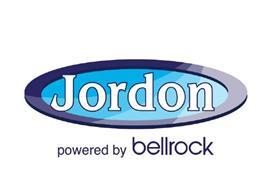
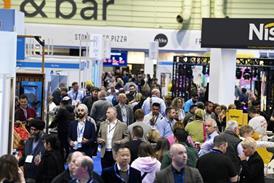

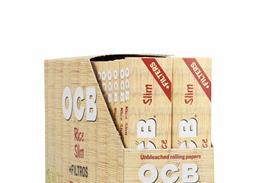
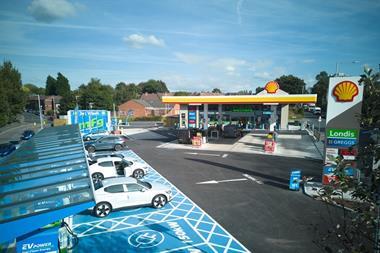




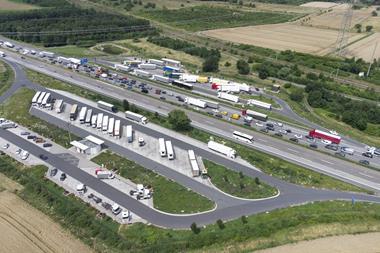

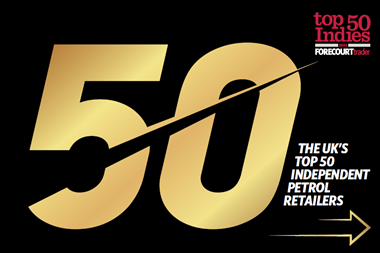
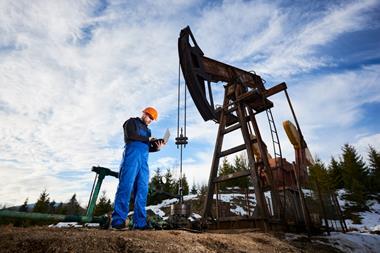
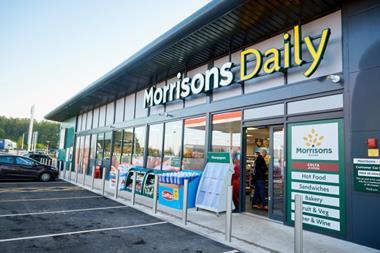
No comments yet